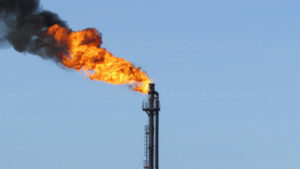Emission Control: Do we need a mega fund to make Australia a hydrogen superpower?

Pic: Vertigo3d / E+ via Getty Images
Australia’s Federal Government, and a few opportunistic state authorities, have designs on turning sunny and windy Australia into a hydrogen superpower.
It makes sense — we have the sun and wind resources as well as gas and coal export facilities that could be readily converted into hydrogen hubs.
The Morrison Government plans to inject more than $1.2 billion into the hydrogen industry, creating 8,000 Australian jobs along the way.
Last week it lobbed an additional $150 million investment to bolster its Clean Hydrogen Industrial Hubs program, enabling the roll out of hydrogen hubs across seven priority regional sites.
“Government funding will help to de-risk projects and quickly achieve the scale necessary to establish new export industries and meet the growing needs of the Indo Pacific region”, the government said.
But it is already facing calls from the nascent industry to put more moolah where its mouth is.
An initial allocation of A$10 billion is needed
Energy Minister Angus Taylor said Australia has the potential to be a world leader in the production of affordable and clean hydrogen with the Australian industry potentially generating more than $11 billion a year in GDP by 2050.
However, a white paper released by The Australian Hydrogen Council titled Unlocking Australia’s Hydrogen Opportunity this week outlines how far we have to go to get there.
Setting out a series of recommendations for actions to help the country achieve net zero emissions with the assistance of the emerging hydrogen industry, the paper argues that Australia needs a national approach to creating a viable hydrogen energy industry.
It also advocates for a new body to develop an evidence-based approach to planning and coordinating the transition to net zero.
“This body should be explicitly tasked with addressing how gas and electricity infrastructure can be co-optimised for delivering the lowest cost hydrogen to end consumers”, the paper states.
Interestingly, the paper points out that a Net Zero Fund would need to be established, with an initial allocation of A$10 billion and a top up of A$1 billion each year to 2030.
That is lightyears ahead of the commitment currently on the table from the Feds, who remain in a holding pattern on a net zero commitment amid dissent the junior Coalition partner, the Nationals.
Key priorities
Priorities for the fund in hydrogen should be applications that are more likely to require clean hydrogen to decarbonise and more likely to achieve large scale.
The AHC says they should demonstrate an ability to open the market to other applications through knowledge and technology sharing, geographic proximity, or cost reduction.
Early priorities should include:
- Funding for heavy vehicle trials, and trials for lighter trucks and buses, at a cost of at least A$565 million; and
- A hydrogen readiness program of at least A$1 billion for industrial processes that cannot readily be electrified, including (and not exclusively) for the production of iron/steel, ammonia, methanol, and alumina/aluminium.
Expanding on the topic of hydrogen, the paper contends that the Australian government should drive and lead the creation of the clean hydrogen industry.
Even though the feds have released a national hydrogen strategy, more commitment is needed from the government to get it off the ground.
“They require a further significant demonstration of government commitment to implementation and market development,” the report authors said.
Hefty capital investment required
An Australian hydrogen industry will require large-scale electrolysers, renewable electricity, hydrogen storage, water and water pipelines, electricity infrastructure, and hydrogen pipelines with each of these elements having its own costs.
Impacts on local economies will also need to be understood and planned for, the paper outlined, and will need whole-of-economy planning that addresses multiple hydrogen production, delivery and use pathways, while also laying the foundation for regulatory developments.
As the hydrogen industry is not yet commercial “considerable investment is required” the paper argued and it is likely that capital investments to produce hydrogen alone could run to tens of billions of dollars.
Net Zero commitment to inspire investment in green energy: Clean Energy Council
There is little doubt funding will be increased for green energy initiatives should the Morrison Government have its hand forced on a net zero commitment.
Continuing to use the ‘technology not taxes’ mantra to sell its vision of an Australia where emissions can reduce while coal miners keep their job, it is now facing an awkward internal power struggle with Nationals members emboldened by the return of Barnaby Joyce, who claim a net zero commitment will kill regional communities.
While it has happily claimed to be on target to hit its Paris Agreement targets of a 26-28% reduction on 2005-level greenhouse gas emissions by 2030, critics say targets have to be an order of magnitude higher to be successful.
Word has even emerged this week that if Morrison can’t get a deal together on a net zero target before the COP26 climate dialogue in Glasgow in November the quarantine weary PM may not even bother showing his face.
A net zero announcement does appear to be coming though, and the Clean Energy Council has thrown down the gauntlet to Canberra to make 100% of the grid renewable by 2030, just nine years from now.
According to the CEC, making Australia’s domestic electricity supply 100% renewable would deliver a 44.5% cut in carbon emissions on 2005 levels and revive waning confidence for investors in renewable energy.
“Australians expect that any targets are met with real progress, not just slogans, and there is a clear expectation from the international community for Australia to turn its reputation as a climate laggard around ahead of COP26,” CEC CEO Kane Thornton said.
“The renewable energy industry has done the heavy lifting on reducing Australia’s emissions over the past decade and has proven its ability to meet and beat any target put in front of it.
“Australia should be aiming to meet its domestic electricity demand with renewable energy and storage by 2030.
“This would provide us with the foundation to become a global clean energy superpower, electrifying other sectors of the economy currently dependent on fossil fuels, such as transport and heavy industry, and exporting clean energy to Asia and the world.”
An estimated 4.2GW of renewable energy would need to be added each year form 2022 to 2030 to meet this target, according to modelling on a rapid transition scenario by the Australian Energy Market Operator.
Thornton said the Government had to ensure an orderly and clear transition for people employed in coal, including investing in reskilling the 10,000 Australians employed in the domestic thermal coal industry.
“Renewable energy has the power to reduce carbon emissions, drive economic growth and create jobs and career pathways. Now is the time to accelerate the clean energy transition,” he said.
ASX green energy stocks
Scroll or swipe to reveal table. Click headings to sort.
| CODE | COMPANY | PRICE | 1 MONTH RETURN % | 6 MONTH RETURN % | 1 WEEK RETURN % | 1 YEAR RETURN % | MARKET CAP |
|---|---|---|---|---|---|---|---|
| PRM | Prominence Energy | 0.014 | 17 | 0 | 22 | 100 | $ 14,198,728.95 |
| PGY | Pilot Energy Ltd | 0.056 | -2 | -32 | 12 | 47 | $ 27,587,260.25 |
| AVL | Aust Vanadium Ltd | 0.024 | 4 | -4 | 9 | 85 | $ 78,739,811.54 |
| PH2 | Pure Hydrogen Corp | 0.245 | 17 | 0 | 7 | 302 | $ 76,899,586.44 |
| HXG | Hexagon Energy | 0.075 | -3 | -24 | 6 | 36 | $ 34,343,064.68 |
| PRL | Province Resources | 0.15 | 3 | 7 | 3 | 486 | $ 169,448,971.65 |
| DEL | Delorean Corporation | 0.195 | -11 | 3 | $ 35,815,656.00 | ||
| GNX | Genex Power Ltd | 0.23 | -2 | 7 | 2 | 31 | $ 246,077,010.35 |
| HZR | Hazer Group Limited | 0.94 | -9 | -13 | 2 | 62 | $ 143,002,170.63 |
| MPR | Mpower Group Limited | 0.061 | -12 | -59 | 2 | 118 | $ 13,119,596.76 |
| AST | AusNet Services Ltd | 2.535 | 29 | 39 | 1 | 32 | $ 9,804,709,084.16 |
| CXL | Calix Limited | 5.16 | 42 | 125 | 0 | 467 | $ 818,133,729.28 |
| SKI | Spark Infrastructure | 2.805 | -1 | 28 | 0 | 32 | $ 4,913,871,984.00 |
| RFX | Redflow Limited | 0.059 | 0 | -16 | 0 | 99 | $ 83,817,022.62 |
| QEM | QEM Limited | 0.145 | -6 | -36 | 0 | 51 | $ 15,885,716.57 |
| NEW | NEW Energy Solar | 0.805 | -4 | 4 | 0 | -2 | $ 289,508,904.81 |
| IRD | Iron Road Ltd | 0.175 | -10 | -27 | 0 | 22 | $ 139,053,301.45 |
| GEV | Global Ene Ven Ltd | 0.08 | 18 | -17 | 0 | 33 | $ 35,659,249.63 |
| IFT | Infratil Limited | 7.62 | 6 | 19 | -1 | 66 | $ 5,474,523,544.56 |
| BSX | Blackstone Ltd | 0.45 | -2 | 6 | -1 | 0 | $ 156,966,807.40 |
| FMG | Fortescue Metals Grp | 15 | -25 | -27 | -2 | -7 | $ 45,568,680,786.40 |
| VUL | Vulcan Energy | 13.12 | 1 | 117 | -3 | 929 | $ 1,584,631,214.78 |
| LIO | Lion Energy Limited | 0.038 | -10 | 31 | -5 | 52 | $ 11,573,777.84 |
| MEZ | Meridian Energy | 4.67 | -5 | -4 | -8 | 3 | $ 6,009,188,085.36 |
| ECT | Env Clean Tech Ltd. | 0.009 | -10 | -40 | -10 | -10 | $ 11,044,129.73 |
It’s been some sort of month for Calix (ASX:CXL), the green technology firm that is one of the favourite stocks of a number of ESG-focused investment fund managers.
Calix has its hands in a few pies, from advanced batteries to limestone calcination and CO2 capture and storage.
It is also working with lithium major Pilbara Minerals (ASX:PLS) on a scoping study into a low emissions midstream lithium refinery.
Calix shares were up 42% for the month, 125% over the past 6 months and 467% over the past year, propelling the firm to a market cap of more than $800 million as funds have piled into the company.
Calix share price today:
Related Topics

UNLOCK INSIGHTS
Discover the untold stories of emerging ASX stocks.
Daily news and expert analysis, it's free to subscribe.
By proceeding, you confirm you understand that we handle personal information in accordance with our Privacy Policy.








